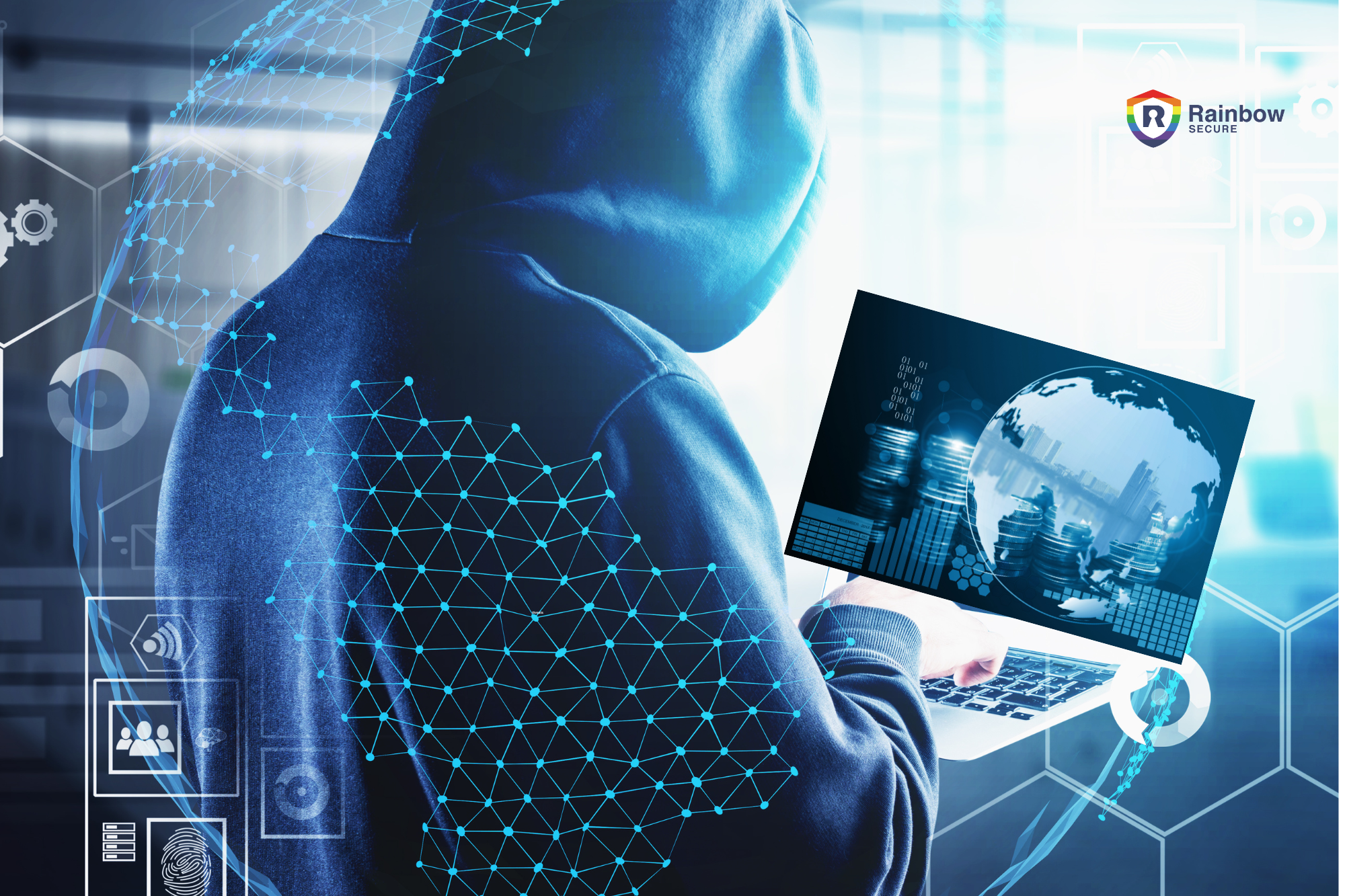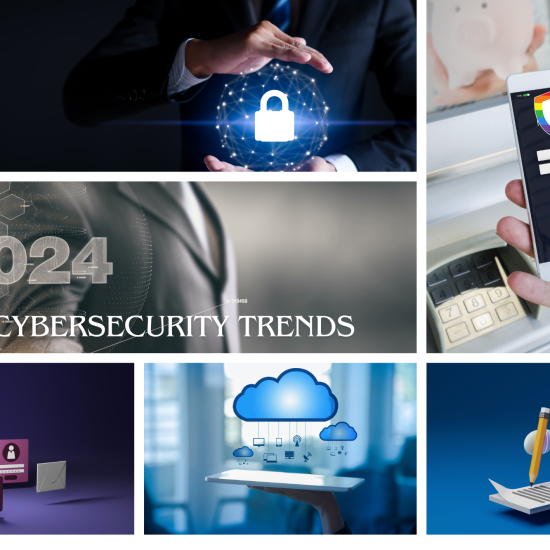Safeguarding the Financial Sector: Navigating Latest Cyber Threats, Vulnerabilities, and Best Practices
In an era dominated by digital advancements, the financial sector is both a beacon of innovation and a prime target for cyber threats. As technology evolves, so do the tactics employed by malicious actors seeking to exploit vulnerabilities in financial systems. When the financial system experiences turbulence, its effects reverberate throughout the economy. The financial and banking sector has witnessed an alarming surge in the frequency and complexity of cyber-attacks. Consider the following statistics that demonstrate the extent and gravity of these attacks by various threat actors on financial entities:
- Financial institutions ranked as the second most affected sector by the number of reported data breaches in the previous year.
- Institutions in the U.S., Argentina, Brazil, and China were among the hardest hit.
- Finance and insurance institutions globally reported 566 breaches, resulting in over 254 million leaked records as of December 2022.
- Ransomware attacks on financial services increased from 55% in 2022 to 64% in 2023, almost double the 34% reported in 2021.
- Only 1 in 10 attacks were prevented before encryption, resulting in a total of 81% of organizations falling victim to data encryption.
- Among all sectors, data breaches cost the finance industry the second-highest amount at $5.9 million.
In this article, you will read about:
Evolving Cyber Threat Landscape
Vulnerabilities in Financial Systems
Recent and biggest cyber-attacks on the financial sector
Best Practices for Cybersecurity in the Financial Sector
How can Rainbow Secure help?
Evolving Cyber Threat Landscape
The financial sector remains a lucrative target for cybercriminals due to the vast amounts of sensitive data and financial assets it manages. In their recent report, the Federal Reserve Board discusses the potential risks and emerging threats that could impact the U.S. economy. The report highlights cybersecurity as the most significant concern for financial institutions, specifically mentioning Ransomware-as-a-Service (RaaS) and advanced Distributed Denial of Service (DDoS) attacks.
Ransomware-as-a-Service (RaaS)
RaaS is a highly advanced and rapidly spreading threat that is challenging to attribute. Malicious actors use RaaS to create standardized templates for ransomware, which can be sold to other criminals in exchange for a cut of the ransom. This allows less experienced attackers to cause widespread disruptions, forcing victims to pay the ransom or rebuild their infrastructure from scratch to resume normal operations.
Distributed Denial of Service (DDoS) Attacks
Sophisticated DDoS attacks aim to overwhelm target resources with traffic, making them unavailable to legitimate users. The United States’ financial services sector has been a prime target of DDoS attacks for years, impacting not only financial institutions but also external entities and other stakeholders.
Phishing and Social Engineering:
Phishing attacks are becoming increasingly sophisticated, with cybercriminals using deceptive emails and social engineering tactics to trick employees into divulging sensitive information. Training staff to recognize and report phishing attempts is crucial.
Unregulated Customer Data
Companies collect and access large volumes of customer data, often containing sensitive information like customer PII and PHI. Unfortunately, this data is often used irresponsibly, leaked, or accessed by unauthorized third parties. Companies may not meet compliance requirements like GDPR when using this data and may face legal issues or spend resources to meet these requirements. Gathering sensitive customer information has its advantages and disadvantages. It can improve analytics, customer experience, and provide personalized service. However, it can also become a significant security liability. To protect customer data more effectively, finance industry leaders can:
- Monitor and log all customer data access
- Establish clear and deterministic data access and security policies
- Enforce access policies across all access points
- Ensure that access that is not required permanently is given only for the required time
- Prioritize the security of sensitive data over non-sensitive data.
Mobile Banking Security
Mobile banking is a convenient way to conduct transactions, but it comes with many security risks that are constantly growing. Banks and financial institutions must test their mobile apps continuously to detect potential security issues.
- Additional security features like multi-factor authentication, data encryption, secured code, and communication can be added.
- Contextual authentication, smart tools that account for behaviors and context surrounding events like transactions or logins, can be added.
Cloud-Based Attacks
Cloud systems contain volumes of sensitive business data, making them a significant security liability. Financial organizations must do their due diligence in finding reliable partners that have excellent security tracker records and strategies to ensure no damage will happen. To protect against cloud-based attacks, organizations must:
- Check if their security is up to standards
- Check their identity and authentication controls
- See if they outline security, support, and maintenance in their SLA
- Check out their storage and data center locations
- Ensure they are compliant with regulations like the PCI-DSS and EUGDP
- Conduct a penetration test on their infrastructure with a cybersecurity professional.
Increased Risk of Supply Chain Attacks
Supply chain attacks target vendors that offer vital tools or services to the whole supply chain. Financial organizations need to create a Zero Trust Architecture to validate and verify all digital interaction stages, making it difficult for attackers to breach information through other services. Privileged Access Management should be included in this process to control and monitor all users with access.
Defi and Cryptocurrency
More financial services include crypto transactions, and this carries many risks. DeFi projects often have internal risks as their systems aren’t secured and tested over time. Organizations must create secure DeFi protocols by working with experienced developers to avoid cyber threats like crypto theft, identity theft, and personal information leakage.
Protecting the global financial system requires a threat-centric approach. Financial firms, institutions, tech companies, and government agencies must work together internationally to create a security framework capable of learning about threats and adjusting security strategies. Establishing relationships with the industry, government actors, tech companies, and financial authorities is essential to share strategies, learn about global risks, and find already-applied solutions.
Vulnerabilities in Financial Systems
Given the inherent diversity of the financial services sector and the ever-changing cybersecurity and compliance landscape, it’s impossible to establish a one-size-fits-all set of vulnerabilities for all financial services institutions. However, there are certain vulnerabilities that are more prevalent and must be taken into consideration.
Reactively Evaluating Current Cybersecurity Posture
Institutions cannot address cybersecurity and compliance vulnerabilities of which they are unaware. For this reason, it’s important that financial service firms take a proactive approach by assessing their existing vulnerabilities and discussing them with a managed service provider (MSP).
Ransomware Attacks
As the world becomes more digitally integrated, the threat of ransomware attacks increases exponentially. These attacks use malware to gain access to an organization’s systems or data and hold that data hostage until a ransom is paid. The results of these attacks can be catastrophic. In addition to the ransom amount, there are legal fees and other costs associated with damage control, as well as potential loss of data.
Access Vulnerability
Flaws in various levels of access to information can leave sensitive data exposed and vulnerable to attackers. For this reason, cybersecurity integration is crucial across all divisions and at all levels of access in an organization.
Managing Compliance
The evolution of information technology has increased the compliance burden on the financial services industry. It’s important to actively manage compliance risk and strengthen compliance overall to earn customer confidence and avoid costly penalties. Laws such as FFIEC IT, the Gramm-Leach-Bliley Act, NYDFS, GDPR, and SOC2 have placed pressure on financial services companies to build and enforce some of the strongest cyber risk management programs across any industry.
Business Continuity
A proactive and dynamic backup and disaster recovery solution is critical in preventing business interruption and loss of essential data, which could trigger a compliance violation. Financial and investment organizations must establish a solution before an outage to ensure timely recovery and minimize interruption time for clients.
Outdated Software and Systems
Legacy systems often lack the security features of modern counterparts, making them susceptible to exploitation. Regular updates and system modernization are crucial to closing potential entry points.
Inadequate Authentication Measures
Weak or outdated authentication methods can compromise user accounts. Implementing multi-factor authentication and biometric solutions enhances security and reduces the risk of unauthorized access.
Insufficient Data Encryption
Without robust encryption, sensitive data is vulnerable to interception. Financial institutions must prioritize end-to-end encryption to safeguard customer information during transit and storage.
Recent and biggest cyber-attacks on the financial sector
Here are some recent and biggest cyber-attack events on the financial sector:
Chinese Bank ICBC
The U.S. financial services division of Chinese bank ICBC was hit by a cyberattack on Nov 10, 2023, that reportedly affected the trade of U.S. Treasurys. ICBC, the world’s largest lender by assets, said its financial services arm experienced a ransomware attack “that resulted in disruption to certain” systems. Security experts have said ransomware from the hacking group LockBit was used to carry out the cyberattack on ICBC.
Wells Fargo Bank
Wells Fargo Bank was responsible for a 2021 data breach that exposed the sensitive data, including Social Security numbers, of thousands of customers, according to a proposed class action filed in federal court in San Francisco.
Tether Attack
In March 2021, cyber criminals threatened to leak documents from the Tether cryptocurrency. The attackers claimed the data would “harm the Bitcoin ecosystem” and demanded a settlement fee of around 500 Bitcoin ($24 million), but Tether refused to pay.
CNA Financial Breach
A ransomware attack on insurance firm CNA Financial left employees locked out of their systems and blocked from accessing corporate resources. The attack in March 2021 also involved company data being stolen, which led CNA Financial to reportedly pay the $40 million settlement fee.
Cream Finance Breach
Cream Finance, a decentralized finance firm, suffered a vulnerability in its project’s market system. The hack, which was revealed in September 2021, caused losses worth $34 million.
BitMart cyber-attack
Yet another cybersecurity attack against digital currencies, BitMart suffered a breach that enabled cyber criminals to steal approximately $150 million worth of cryptocurrency in December 2021. The attack resulted in total losses of around $200 million, including damages.
Log4j Breach
In December 2021, a zero-day vulnerability was discovered in the Log4j Java library. The remote code execution flaw is now active, and the resulting bug, Log4Shell, is being activated by botnets like Mirai.
Cognizant Technology Solutions Corp. Cybersecurity Breach
Technology and consulting firm Cognizant was affected by the Maze ransomware attack on April 18, 2020. The attackers stole data and threatened to publish it online unless Cognizant paid a settlement fee. Cognizant later revealed it paid a ransom fee of between $50 million and $70 million to restore its services.
SolarWinds Supply Chain Attack
Although not exclusively targeting the financial sector, the SolarWinds attack revealed the potential impact of compromising the software supply chain, emphasizing the need for heightened vigilance in financial institutions.
SWIFT Banking System Attacks
Cybercriminals have targeted the SWIFT international banking system, attempting to manipulate or steal funds by exploiting weaknesses in the global financial messaging network.
The First American Financial Corporation
In May 2019, more than 885 million financial and personal records linked to real estate transactions were exposed through a common website design error.
This error is known as a “Business Logic Flaw” on the First American Financial Corp website. This is when a webpage link leading to sensitive information isn’t protected by an authentication policy to verify user access. This exposure was not initiated by a hacker, the vulnerability that facilitated sensitive data access was caused by an internal error – an event known as data leaks.
Capital One
Former Amazon Web Services software engineer, Paige A. Thompson, illegally accessed one of the AWS servers storing Capital One’s data and stole 100 million credit card applications dating back to 2005.
JP Morgan
2014 JP Morgan Data Breach affected tens of millions of people, and seven million businesses—a total of 83 million customers. Five individuals used malware, social engineering, and spear-phishing attacks to plunder emails, addresses, phone numbers, SSNs, and other customer information, not just from JP Morgan itself, but other related financial institutions around the same time.
Best Practices for Cybersecurity in the Financial Sector
Here are some essential tips to lower the risk of ransomware and other cyberattacks in the financial services sector:
Monitor Security Performance Continuously
Identifying and remediating vulnerabilities before they can be exploited is crucial to protecting against ransomware and other cyberattacks. Two key security program performance indicators – patching cadence (the time between software patches becoming available and when they are implemented) and configuration management – correlate with the risk of ransomware threats. In a study it was found that 30% of financial institutions are slow to apply patches, making them seven times more likely to experience ransomware than those that maintain a regular patching cadence. Misconfigured systems also expose 70% of these companies to ransomware risk. Therefore, continuously monitoring security performance is essential.
Focus on Third-Party Risk Management
Cybercriminals often target the most vulnerable businesses within a supply chain to bypass conventional security measures. This weak link is used as a stepping stone to infiltrate their partners. To reduce this risk, use tools that provide deep and continuous insight into the risks and security performance of every organization in a company’s supply chain. With this data-driven insight, security and risk management teams can speed up vendor onboarding processes and keep tabs on vendors’ security postures long after contracts have been signed.
Share Information on Cyber Risk
Collaboration is key to thwarting threat actors. Organizations can share critical cyber risk information, including self-published security ratings. They can invite third-party vendors to view their own ratings and investigate forensic data on potential security issues. In the event of a large-scale cyber-attack, organizations can notify partners and vendors as a group so that they can proactively assess their security postures and take action to reduce the risk of becoming a victim.
Gain Buy-In from Executives
Executive leaders and board members make critical decisions about cybersecurity, but there can be significant gaps between what the Security Operations Center (SOC) knows about cyber risk and what it reports to leadership. SOC leadership must learn the art of effective executive reporting. This means talking to executives in a non-technical way that ties a company’s security challenges directly to its financial and reputational performance.
Regular Cybersecurity Audits
Conduct comprehensive cybersecurity audits to identify vulnerabilities and assess the effectiveness of existing security measures.
Employee Training and Awareness
Train employees to recognize and report phishing attempts, social engineering, and other cyber threats. Human error is a significant factor in cybersecurity breaches.
Collaboration and Information Sharing
Foster collaboration within the financial sector and share threat intelligence to stay ahead of emerging cyber threats. Joint efforts can enhance the collective resilience of the industry.
Robust Incident Response Plans
Develop and regularly test incident response plans to ensure a swift and effective response to cyber-attacks. Having a well-defined plan can minimize the impact of a security breach.
Embrace Advanced Technologies
Implement cutting-edge cybersecurity technologies such as artificial intelligence, machine learning, and behavioral analytics to proactively identify and mitigate threats.
As the financial sector continues to embrace digital transformation, the importance of cybersecurity cannot be overstated. By staying abreast of the latest cyber threats, addressing vulnerabilities, and adopting best practices, financial institutions can fortify their defenses and safeguard the trust and financial well-being of their clients. A proactive and collaborative approach is key to staying ahead in the ever-evolving landscape of cybersecurity.
Rainbow Secure plays a pivotal role in fortifying financial sector against cyber threats. In an era where digital security is no longer optional but a necessity, Rainbow Secure stands as a guardian, offering robust, user-friendly, and compliant security solutions.
Enhanced Security Rainbow Secure’s multi-dimensional approach to security, incorporating unique color and style-based authentication, has redefined the meaning of ‘secure login’. By protecting against threats like keyloggers, brute force, and phishing attacks, we ensure that financial sector can operate in the digital realm with confidence and peace of mind.
Simplified User Experience Understanding that complexity is the enemy of security, Rainbow Secure has revolutionized the user experience. Our intuitive and customizable login process not only enhances security but also fosters user engagement and compliance. This ease of use is critical in ensuring that security measures are consistently and effectively implemented across organizations.
Compliance and Regulation In today’s regulatory landscape, compliance is not just about checking boxes. It’s about protecting reputations, building trust, and ensuring long-term sustainability. Rainbow Secure helps financial sector navigate this complex terrain, adhering to stringent standards like GDPR, HIPAA, and NIST, among others. Our commitment to compliance is a testament to our dedication to not just meeting, but exceeding, the highest standards of data protection and privacy.
How can Rainbow Secure help?
Right amount of data and system access to right person or role at right time is the key to organizations being able to use digital tools and platforms to serve the customer base and stay compliant.
Next Generation Rainbow Secure platform is a modern identity authentication (MFA) and single sign- on (SSO) solution for your business across on-premises and cloud environments. It’s backed by an experienced team of cloud and security experts, years of innovation, and partnerships with leading cloud platforms. Rainbow Secure is a Leader in Smart and Secure Digital Solutions that work for you.
Insider Threats: Rainbow Secure assists in mitigating insider threats by implementing access controls, user monitoring, and privilege management solutions. Also, if the user leaves behind unlocked devices, saved passwords in the password manager or browser can be misused by malicious insiders. Interactive login security from Rainbow Secure helps prevents unauthorized access and protects against data theft or misuse by privileged users.
ChatGPT Security for business: Secure your ChatGPT login and Data with Rainbow Secure MFA Plugin.
Secure AI Integration: Consult Rainbow Secure Team to integrate AI in your business workflows powered by Azure and Rainbow Secure API.
Secure Workforce & Customer login: Use Authentication Plug-in by Rainbow Secure to secure workforce and customer logins. In this plug-in, you get a multi-dimensional password, passwordless login solutions with AI monitoring, Risk Analytics, and location fencing.
IoT Friendly Security: IoT platform developers can secure their cloud endpoints, and user logins (both admin and customer) against unauthorized access and scripted malware attacks using easy to adapt and support multi-layer interactive rainbow secure authentication solutions and services that includes but not limited to security assessment, API Security, secure user onboarding, and risk analytics.
Secure Data and its Backups We provide Cloud based data vault and data archive solutions backed by Microsoft Azure and secured by our authentication plugin and industry best practices to give you ransomware protection, help with data governance and disaster mitigation.
Database Security We provide technical consulting services to Secure Databases in cloud and on premise. You get best protection for your data in databases using native and third-party security tools.
Meet Compliance Requirements: Use Authentication Plug-in by Rainbow Secure with your business application and in SSO (Single Sign-on) and meet industry standards and compliance regulations such as NIST, ISO, FTC, SOX, SOC2, CMMC, CMMI, HIPAA, PCI, and others.
Securely communicate and Collaborate: Use Secure Business Email by Rainbow Secure and get protection against account takeover, phishing, ransomware, and automated login cyber frauds. In this email, you get options to send encrypted emails, single sign-on with Office 365, and Google, and 1 TB one drive storage.
Connect Business applications: Get one unified login using Rainbow Secure Single Sign-On
Manage User Onboarding / Offboarding using Rainbow Secure IAM
Verify User using Smart Multi-factor MFA. Smart Multi-Factor Authentication from Rainbow Secure which adjusts to your use case, reduces the cyber liabilities of a business from stolen credentials and improves productivity, and enhances user experience.
Do you have more questions about how Rainbow Secure’s innovative solutions help to enhance your security posture and safeguard your financial infrastructure and data from automated attacks? Contact us today. Email us at Hello@rainbowsecure.com







